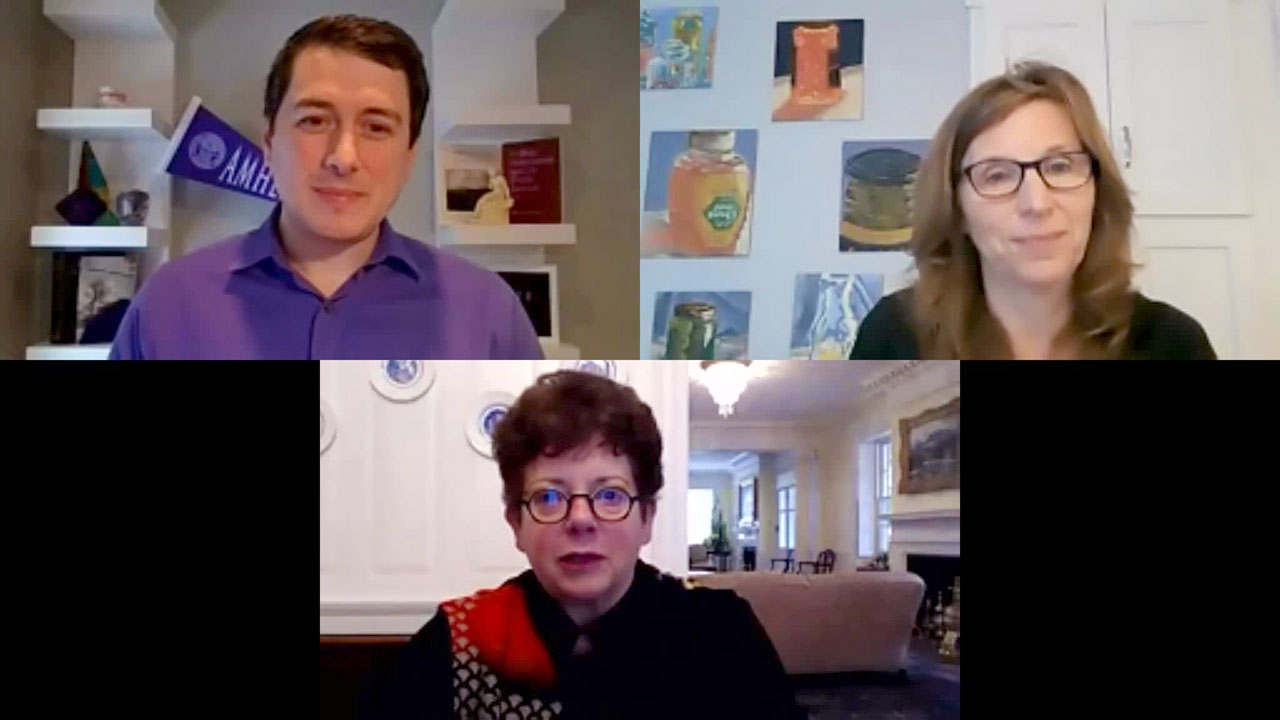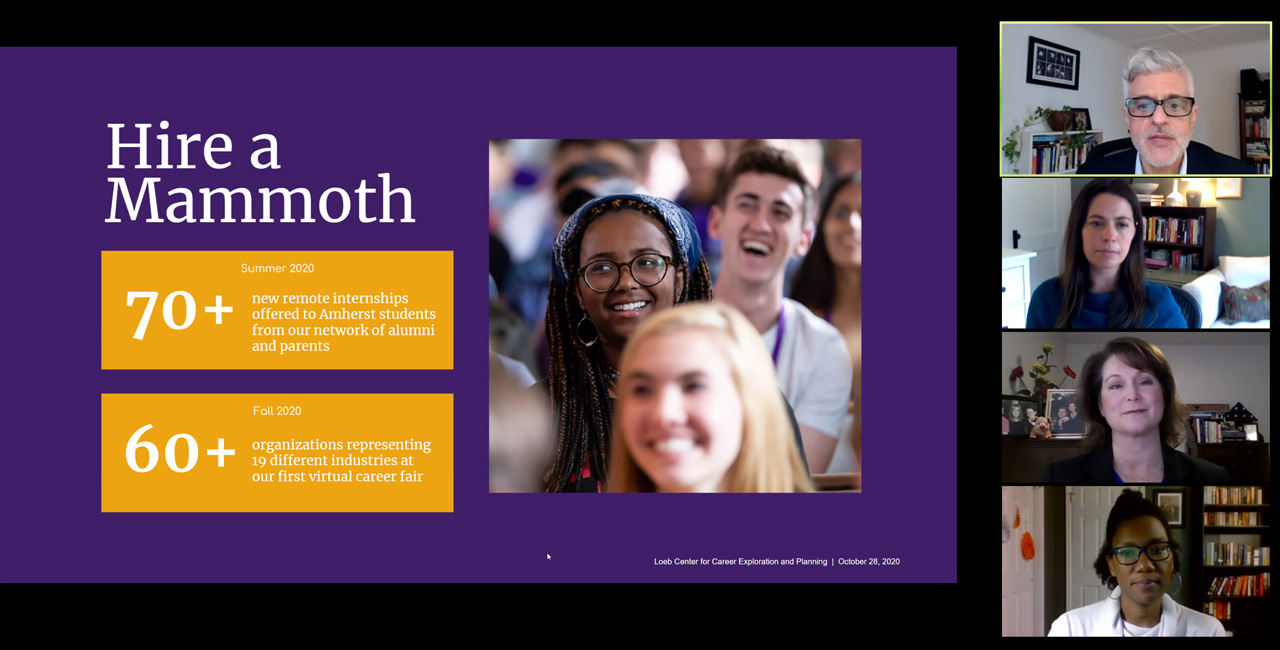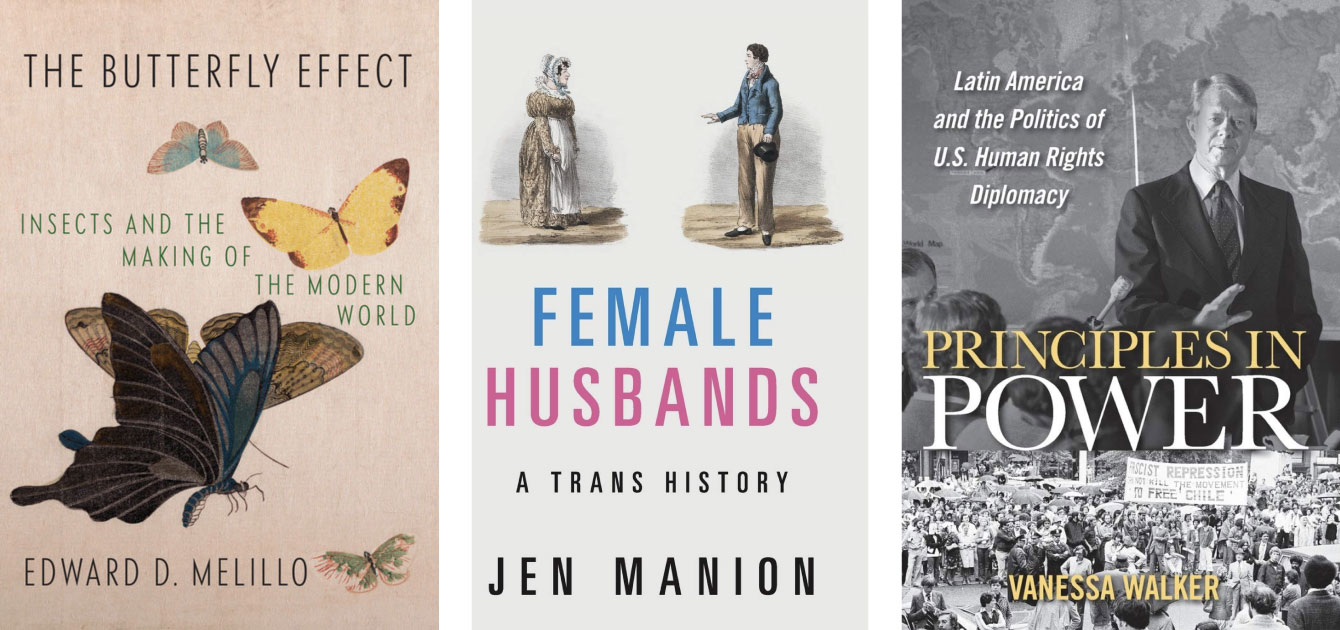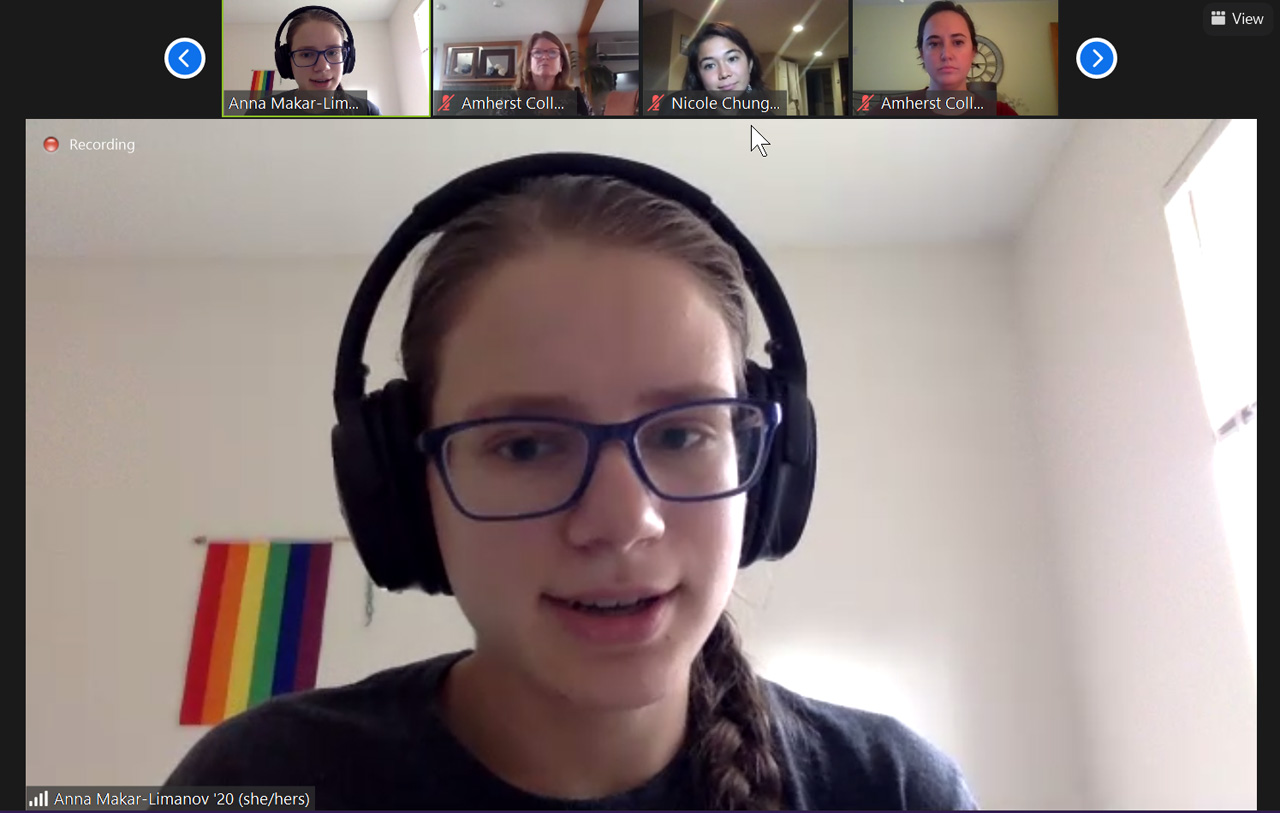The intergenerational "LGBTQIA+ Resilience and Resistance" panel was hosted by Amherst staffers Carol Allman-Morton, Sebastian Merrill and Jxhn Martin (top row). It brought together Matt Randolph '16 and Tierra Allen '09 (middle row), as well as Hilary North-Ellasante '97, Professor Kannan "Jagu" Jagannathan and Ron Wold '70 (bottom row).
“Building community is resistance”
Event: LGBTQIA+ Resilience and Resistance at and After Amherst
One gay student arrived at Amherst pre-Stonewall, not yet fully embracing his identity and not knowing anyone with whom he might share it. Another came out on campus and found “immediate support and love.”
Nearly half a century separated the experiences of Ron Wold ’70 and Matt Randolph ’16. And their stories were some of many told at this Thursday evening “kitchen-table conversation,” hosted by Jxhn Martin, director of the Queer Resource Center, and Sebastian Merrill, assistant director of Alumni and Parent Programs.
Randolph said he was able to “be a bridge between communities” as someone involved in both the QRC and the Black Student Union. “Surviving is resistance, and building community is resistance,” he said. “That’s how we survived as Black queer and trans people at Amherst, is that we had each other’s back.”
The discussion was wide-ranging in terms of issues and ways to spur social change—“diversity of tactics,” in the words of Tierra Allen ’09, for whom theater and music have been vital forms of activism and resilience. Allen spoke not only about campus activities that dealt with gender, sexuality and consent, but also about the racism and classism she found at the College.
Wold cited his classmates’ protests against the Vietnam War and Black students’ efforts toward greater visibility and equity. Providing what he called “a tiny snapshot” of faculty perspective, physics professor Kannan “Jagu” Jagannathan recalled driving with students and other faculty to protest marches in the ’80s and ’90s.
“I felt this mission to just try to build more inclusive schools,” added Hilary North-Ellasante ’97, a K–12 educator. They said their approach to education has been shaped by the experience of straddling several different identity binaries in college, and by the progress that Amherst has made since then.
— Katherine Duke ’05




